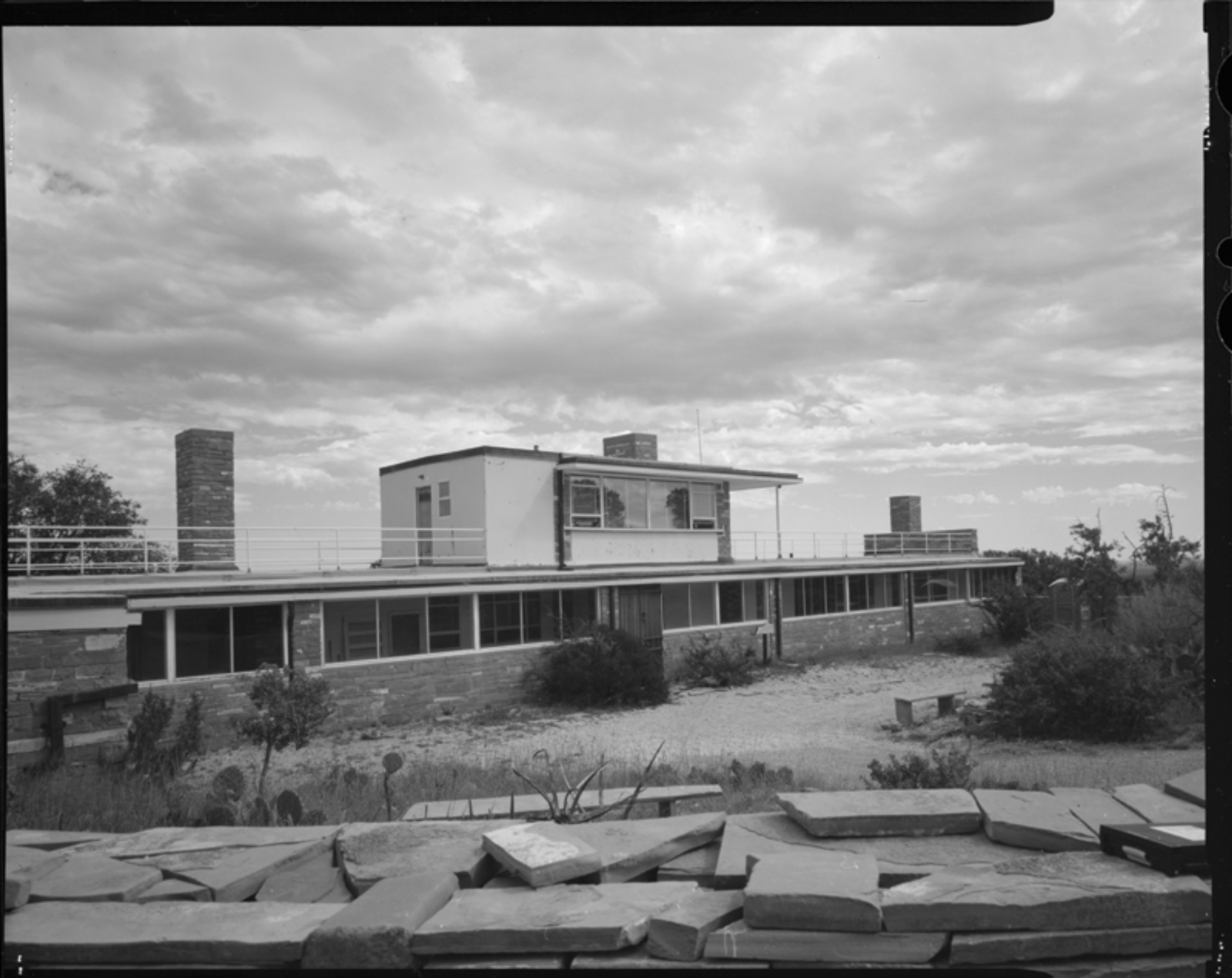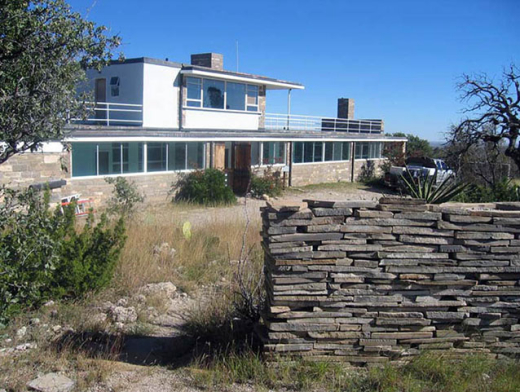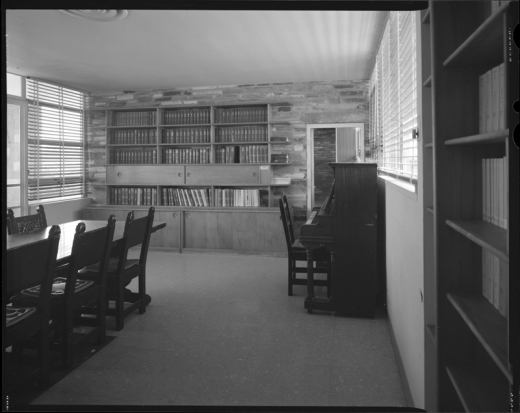The Trans-Pecos region holds many ironies without compunction: Immense stretches of flat scrubland desert give way to looming mountains capped by fossilized reefs; riparian oases of maple, walnut, and oak trees coexist with agaves, prickly pear, and rattlesnakes; and one geologist’s legacy of oil extraction gives rise to a national park and instances of early modern architecture.
Included on America’s 11 Most Endangered Historic Places for 2018 by the National Trust for Historic Preservation, the Ship on the Desert is a little-known piece of Texas architectural history. Located within the Guadalupe Mountains National Park due north of Van Horn and 32 miles south of Carlsbad Caverns, the house was completed in 1945 for Wallace E. Pratt and served as a full-time residence for him and his wife, Iris, until 1963.
Designed by New York architects Milliken & Bevin, it is a thoroughly modern effort with a narrow plan, a flat roof with broad overhangs, and extensive roof decks. Exposed masonry walls, columns, and chimneys show a fascination with the tawny local limestone and provide a regional specificity. Glass exposures frame immense views of the Guadalupe Mountains and the plains that extend eastward toward the Permian Basin.
Pratt, a native Kansan, was the first geologist to use scientific methods to locate oil, and he used some of his profits to purchase the 5,632 acres he later donated to the park service. The acreage constitutes the core of what later became the Guadalupe Mountains National Park on which the Ship is located.
Hopes of smooth sailing for Wallace Pratt's "Ship on the Desert"
Author
Stephen (Chick) Rabourn
Affiliation
Texas Architect Magazine
Tags
Over the past decades, the park service has used the Ship to house guest researchers and has performed necessary maintenance, such as roof repairs. Julie McGilvray, the park’s Cultural Resources Program Manager, is building a coalition of partners to raise awareness and facilitate a wholesale preservation effort. A recent open house event drew an impressive crowd, including members of the Texas and New Mexico historical commissions; faculty from the architecture departments of The University of Texas at Austin and the University of New Mexico; Pratt family relatives; and community members from nearby Carlsbad, New Mexico, and beyond.
The event exhibited new architectural drawings and photographs by students led by Benjamin Ibarra Sevilla, assistant professor of architecture at The University of Texas at Austin. The work constitutes the official record drawings for the National Park Service and will help facilitate restoration efforts.
Architectural historian Anna Mod of Houston delivered a presentation on the history of modernism in Texas. Modernism crept into the urban centers of Houston and Dallas under the guise of Art Deco, and later found wider expression with Philip Johnson and Ludwig Mies van der Rohe in Houston. The project most appropriately compared to the Ship, however, is Richard Neutra’s house for George Kraigher, built in Brownsville in 1937. Like Pratt, Kraigher also was a successful specialist taking part in the 20th-century economy as a pilot in charge of Pan Am’s South American operations. And, like the Ship, that house is also a relatively modest expression of pre-mid-century modernism located far from urban and academic settings.
While the Kraigher house fell into decay and out of memory for decades, it was miraculously rediscovered, listed on the National Trust’s most endangered list in 2004, and successfully rehabilitated. It stands as a cautionary tale about the precarious nature of such far-flung architectural artifacts around the state.
We hope it will be smoother sailing for the Ship on the Desert in the coming years. For more information please contact Julie McGilvray at julie_mcgilvray@nps.gov.




